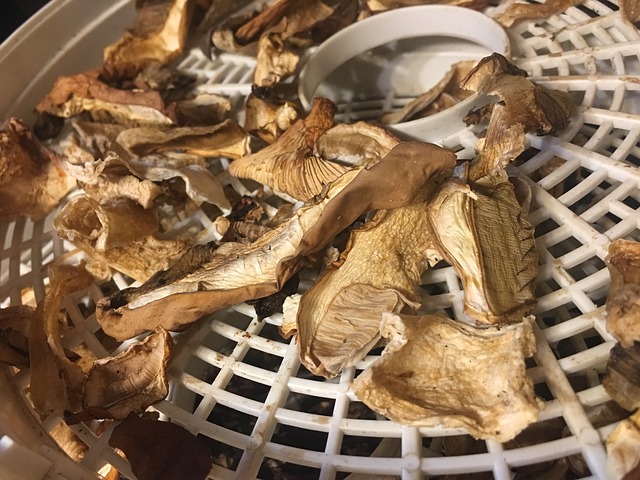General Information
- Pantothenic acid is an essential, water-soluble vitamin and was previously included in the complex of B vitamins.
- The biologically active form is coenzyme A, which plays a key role in energy metabolism.
- Only plants and microorganisms are able to produce pantothenic acid, making plant foods the primary source of vitamin B5. Meat and fish also contain relevant amounts, although this too originally came from plants.
- Pantothenic acid is therefore found in almost all plant and animal foods. This is what the name reflects: “Pantothen” comes from the Greek word “pantos,” which means “everywhere.”
- Deficiencies of this vitamin are rare, regardless of the diet. Reasons for a deficiency can include a very restricted diet, gastrointestinal diseases, or intake of pantothenic acid antagonists (antivitamins) such as ω-methylpantothenic acid.
Why Do We Need Vitamin B5?
As a universal precursor of coenzyme A and as an acyl carrier protein, pantothenic acid is of crucial importance for crucial metabolic processes, for energy production, and especially for fat burning (fatty acid metabolism).
- Involved in carbohydrate, amino acid and fat metabolism
- Plays a central role in energy generation
- Synthesis of steroid hormones (e.g., cortisol, aldosterone, sex hormones)
- Modulation of lipid metabolism (e.g., lowering LDL, increasing HDL)
- Formation of some neurotransmitters (acetylcholine and taurine)
- Aids skin and wound healing
Possible Causes of Deficiency
Low intake:
- Imbalanced or heavily restricted diet
- Food preparation–excessive heating
Increased requirements:
- Pregnancy, lactation
- Age
- Stress
- Alcohol abuse
-
Reduced absorption:
- Due to bowel diseases such as Crohn’s disease or celiac disease
- Increased excretion:
- Diabetes mellitus
- Hemodialysis
- Interaction with medications:
- Antacids, ASA, oral contraceptives, cytostatics
Symptoms of Deficiency
- General symptoms: fatigue, headache, fatigue, gastrointestinal disturbances, low stress resistance, sensations
- Blood: anemia
- Skin/mucous membranes: inflammation (mouth, nose, respiratory tract gastrointestinal tract), dermatitis, impaired wound healing
- Immune system: susceptibility to infections
- Liver: fatty liver
- Adrenal gland: adrenal atrophy, adrenal weakness
- Muscular/neurological disorders: muscle spasms, numbness and toe sensations; if deficiency persists, burning feet syndrome (Grierson-Gopalan syndrome), reflex disorders
- Metabolism: hypoglycemia, increased sensitivity to insulin, disordered fatty acid balance
Recommended Intakes
It is difficult to define an exact RDA for pantothenic acid, because obvious deficiency symptoms only develop in the presence of strong antagonists or with general malnutrition.
A balanced diet includes ca. 5-6 mg pantothenic acid, and it is assumed that this meets daily needs.
Recommended intake for adults and adolescents:
- according to D-A-CH: women and men 6 mg/day
- USA Food and Nutrition Board (FNB): women and men 5 mg/day
Pregnant women:
- according to D-A-CH: 6 mg/day
- USA Food and Nutrition Board (FNB): 6 mg/day
Breastfeeding women:
- according to D-A-CH: 6 mg/day
- USA Food and Nutrition Board (FNB): 7 mg/day
Children, depending on age, see:
- https://www.dge.de/wissenschaft/referenzwerte/pantothensaeure/
- https://ods.od.nih.gov/factsheets/PantothenicAcid-Consumer/
- https://www.nap.edu/read/11537/chapter/29
The Best Plant Sources (per 100 g)
Pantothenic acid is water-soluble and sensitive to heat. Therefore, food preparation (especially cooking) causes some loss. Pantothenic acid is abundant in various grain products, legumes, vegetables, and some types of fruit.
- Mushrooms, dried – 20 mg
- Brewer’s yeast – 7.2 mg
- Yeast flakes – 5 mg
- Peanuts – 2.9 mg
- Wheat bran – 2.5 mg
- Forest mushrooms, raw – 2.5 mg
- Mushrooms, raw – 2.1 mg
- Soybeans – 1.8 mg
- Soybean meal – 1.8 mg
- Rice, unpeeled – 1.7 mg
- Watermelon – 1.6 mg
- Lentils – 1.5 mg
- Whole rye flour – 1.5 mg
- Buckwheat semolina – 1.4 mg
- Broccoli – 1.3 mg
- Oatmeal – 1.1 mg
- Cauliflower – 1 mg
- Quinoa – 1 mg
- Amaranth – 1 mg
- Millet – 1 mg
- Endive – 0.9 mg
- Dates – 0.8 mg
- Kidney beans – 0.8 mg
- Sweet peas – 0.8 mg
- Peas, green – 0.8 mg
- Chickpeas, raw – 0.7 mg
- Pomegranate – 0.6 mg
- Parsnip – 0.5 mg
- Pumpkin – 0.4 mg
Sources
-
Gröber, U. (2011): Mikronährstoffe. Metabolic Tuning – Prävention – Therapie. 3. Aufl. Wissenschaftliche Verlagsgesellschaft mbH Stuttgart
-
Biesalski, H.K., Bischoff, S.C., Pirlich, M., Weidmann, A., (2018). Ernährungsmedizin – Nach dem Curriculum Ernährungsmedizin der Bundesärztekammer (5.Auflage). Stuttgart: Georg Thieme Verlag


